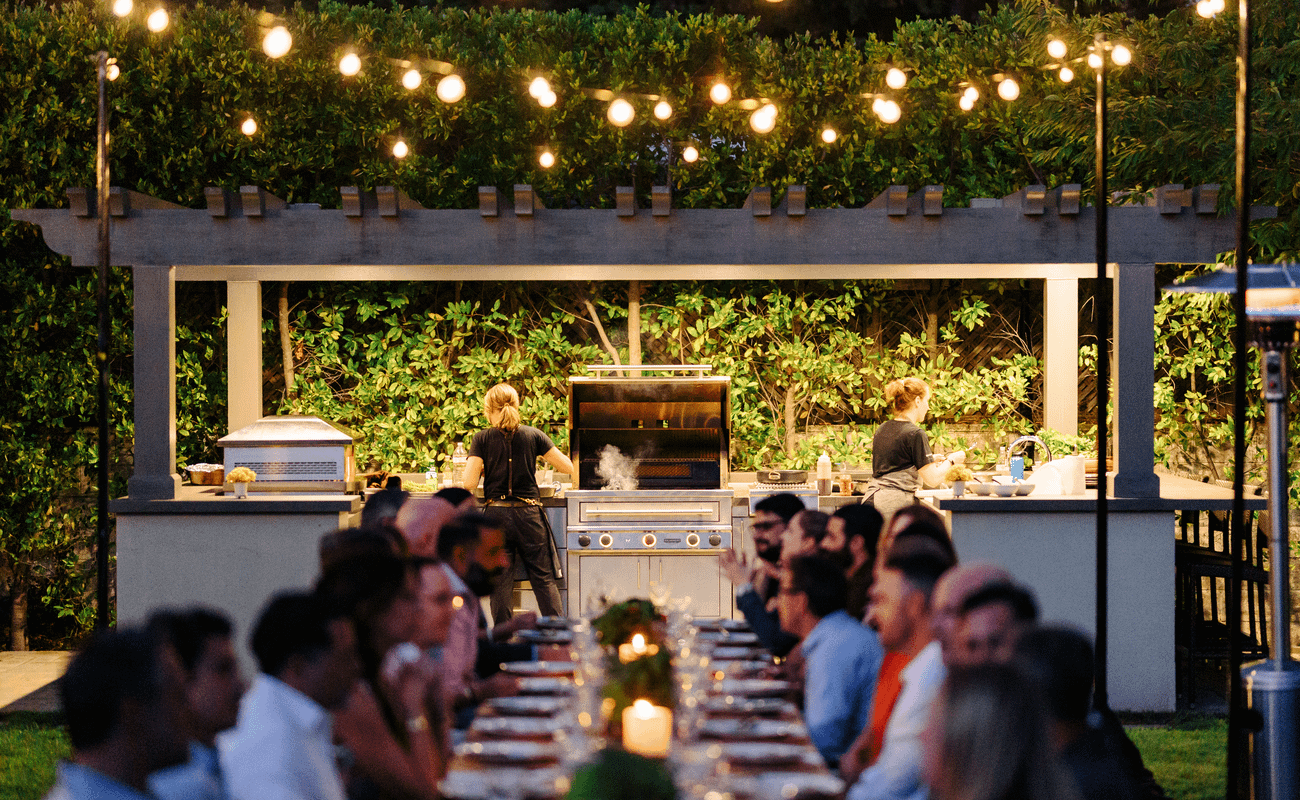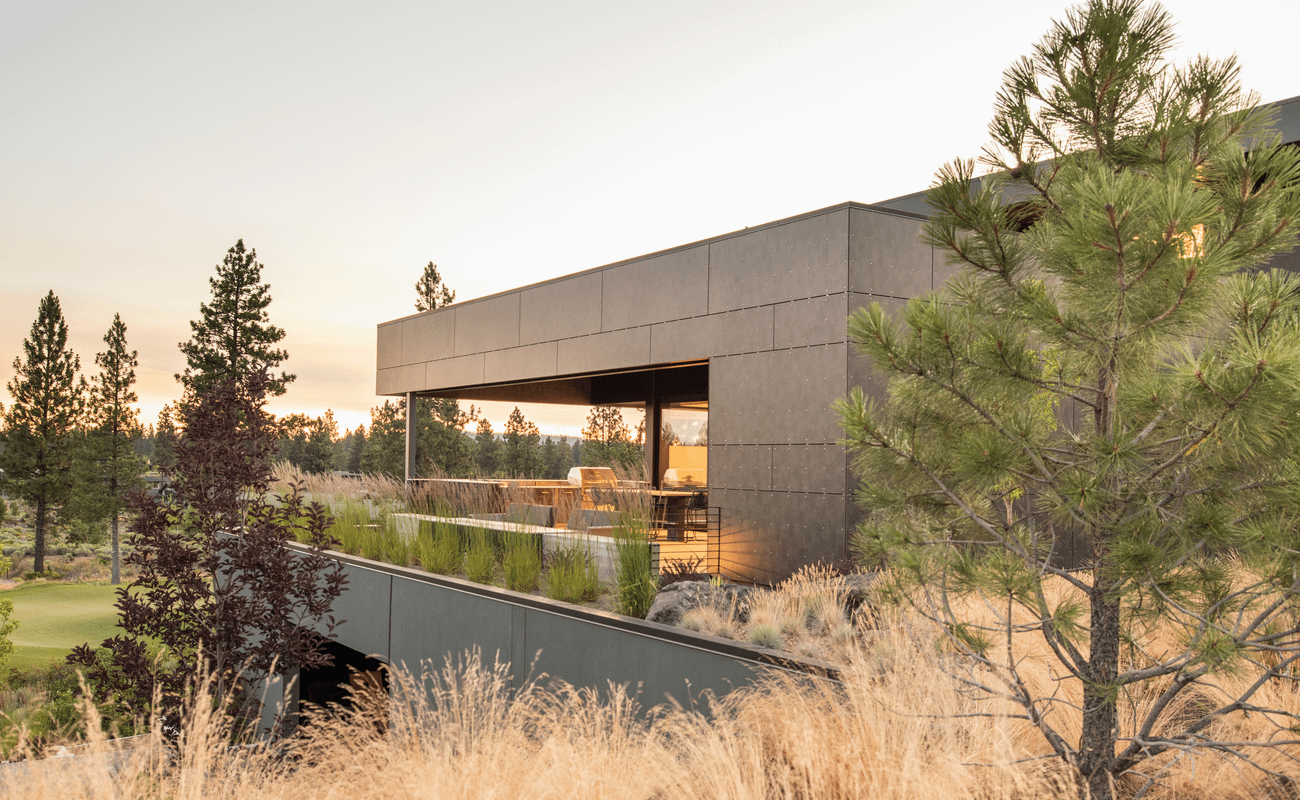Three Ways to Incorporate Biophilic Design into the Outdoor Space
Biophilic design and the pleasures of preparing and enjoying food outdoors offer a powerful synergy that can significantly enhance health and well-being. By incorporating techniques like the use of nature-mimicking materials, sensitive landscaping, and sensorial layering into outdoor spaces, we can create experiences that not only inspire culinary creativity but also promote mental and physical wellness.
.jpg)
WHAT IS BIOPHILIC DEsign?
Human beings are wired to thrive outdoors, whether walking in city parks, hanging out in our backyards, or trekking deep into the wilderness. It is this innate connection which lies at the core of Biophilic Design, the practice of incorporating nature-based elements into built environments to enhance human well-being. More than mere anecdotes, studies focused on the “Biophilia Hypothesis” have repeatedly concluded that humans are healthier and happier when connected to nature and experience lower levels of cortisol (the hormone typically used to assess stress levels) which improves concentration and heightens creativity.
Combine this with the well-documented mental and physical benefits of at-home cooking and entertaining and you have what just might be the ultimate and most pleasurable wellness hack yet: improved health and wellbeing through cooking in biophilic outdoor spaces.
The Benefits of Cooking Outdoors
From campfire s’mores to the perfect filet of cedar planked salmon, the pleasures of cooking outdoors extend beyond mouth-watering sights, sounds, and smells. Unexpected benefits like increased vitamin D exposure, lowered stress, and strengthened relationships through shared experiences are additional benefits. For those working to manage anxiety, the practice of “quiet cooking” outdoors has been shown to stimulate ASMR, Autonomous Sensory Meridian response, a practice so popular that it has inspired an entire sub-genre of YouTube videos.

Three Key Strategies for Increasing Biophilic Attributes in Outdoor Spaces
Just because a kitchen is located outdoors, that doesn’t automatically make it biophilic. A considered, harmonious approach to the kitchen and its relationship to the space around it does. Creating an easy flow of energy and movement where drinks and meals will be enjoyed al fresco, and streamlining the transitions between inside and outside doesn't require a rubber stamp approach. Three key principles of Biophilic Design make it easier than ever.
1. Create a Sense of Connection Through Nature-Mimicking Materials
Natural and engineered stone surfaces like Dekton, which evoke earthy patterns and colors in countertops, are having a major moment in indoor and outdoor kitchen design, not least because of their biophilic attributes. Nature-mimicking materials can reduce stress, enhance creativity and improve mood. Studies also suggest that they can boost cognitive function and foster stronger emotional connections to the built environment.
Stone flooring, kiln-fired bricks and even jute rugs underfoot echo nature. Ipe, a sustainably farmed Brazilian hardwood, introduces a rich wood grain and texture to pergolas, decking, cabinetry and more, while delivering serious longevity (an Ipe deck can last up to 75 years with minimal upkeep).
-1300x800-4ab14b6.jpg)

2. Adapt Landscaping to the Property Style
Though there is no such thing as an inherently contemporary or traditional plant, there are considerations that come into play which affect the energy and flow of the outdoor space. We caught up with Patrick Beam, Landscape Architect at Cleveland, Ohio’s 9th Avenue Designs to get his thoughts on how biophilic design adapts to various design schools.
“With a traditional English style (property) landscape there will often be big flowing beds and a ton of different plant materials. Whereas the more modern, sleek homes, you might do more of an array of one plant. So instead of having, you know, nine different plants in this bed, it might be a square or rectangular planter with all the same plant/plants in an array of plantings. With this approach you're still getting some of the flow, some of that rhythm, it just tends to be a little cleaner…The lines are a little more important [when working on projects] in the contemporary style. Ornamental grasses are a good choice because once they get established, they’re dense, you get great texture out of them in the fall, and you get some great movement, light and shadow lines especially when they seed out or plume movement out of them. It’s like checking three boxes in biophilic design with one plant.”
3. Create Focal Points through Sensorial Layering
An overarching natural palette (think: elegant wooden serving bowls, artisanal ceramics and fresh herbs), all work together to fill the senses and increase a sense of relaxation and wellbeing. Add to that mix the sizzles and aromas of cuisine being prepared outdoors, and the delights and benefits increase significantly.
.png)
The considered utilization of multiple biophilic elements, combined to draw attention away from the mundane and towards a primary point of relaxation and pleasure such as a scenic view, fire pit, swimming pool, walking labyrinth or outdoor kitchen, are what makes biophilic design an essential tool for creating environments that support personal wellbeing while elevating the everyday.

